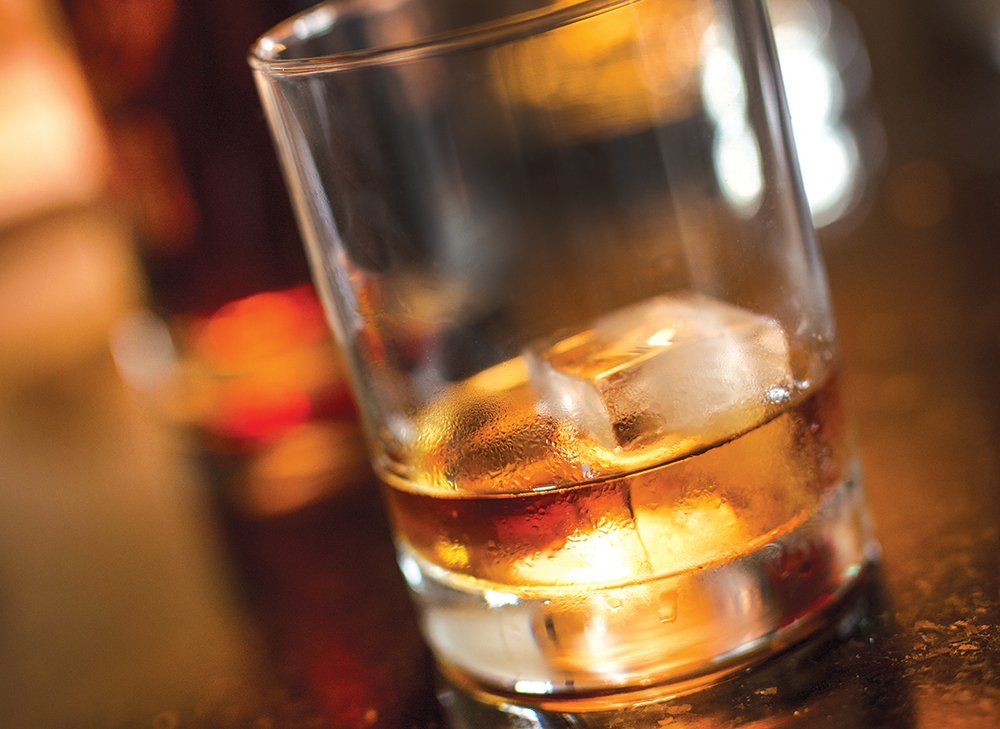When to Ice Your Whiskey
Once disgruntled, I now see the chill.
Article by Fred Minnick
When my friend ordered Pappy Van Winkle 23-year-old on the rocks, I cringed. I mean, how could he? Did he hate puppy dogs and kittens, too? As “on the rocks” left his lips, I seriously questioned my friendship with this guy.
You don’t add anything to something so rare. Well, let me correct that: You don’t add anything at first. After you’ve tasted it and think its velvety structure and complex flavors need, say, a drop of water, then, more power to you. Add away. But you don’t just go asking for “rocks” willy nilly. That’s just insane.
But hey, this guy’s my friend, and an intervention wasn’t necessary. It’s not like he ordered Pappy and Coke. Had he done this, oh, I don’t even want to know what I’d have done.
So, the server brings back the glass, filled to the brim with ice. Not big ice, either. We’re talking thin, already melting ice; thus, it’s dissolving quicker and diluting one of the greatest bourbon pours.
“Um,” my friend says; the waiter walks away. What the hell is wrong with this place?
First, he allowed his guest to commit a bourbon crime and then he poured a Sonic ice bag meant for a slushy into his glass; and finally, he walked away when my friend needed him most, as the ice melted.
“Oh, well,” he says to me, and proceeds to sip.
“To hell with that, Shane,” I said, “this is America, where every whiskey-loving idiot has a right to fuss about too much ice.” I grabbed his glass, took it to the bar and demanded a repour with only two pieces of ice. That’s exactly what happened.

This was 2009, before Pappy was as rare as a Bigfoot sighting, so you can only imagine how I’d react today.
However, that incident changed my perspective on something extremely important to whiskey—ice. Before then, I was repulsed at the mere notion of adding ice to fine bourbon. The cheap stuff? Sure, no harm. But leave the good stuff alone!
That was then.
This is now, a time where my gray hair and experience have taught me we’re not all the same. And some like the cool-and-quenching effect ice offers. Since that sad day, I’ve experimented myself to see when ice best complements, and when it detracts from the whiskey. General rule of ice: The bigger it is, the slower it melts.
High Heat
When you’re sipping cask-strength whiskey, such as Booker’s, George T. Stagg, Garrison Brothers, and Barrell Bourbon, you’ll find the 120-proof and higher will really take a toll on your palate if you’re not used to it. I personally love sipping on a good barrel-proof whiskey neat, but I’ve grown fond of a thick ice cube that slowly dilutes. The cooling effect and proof change with the melting water give you a different whiskey to sip each time.
Youth
Younger whiskeys tend to have a really grain-forward note. Some folks like a cornbread and corn-on-the-cob note—I do—and you’ll find a few pieces of ice really enhances the grain. I find corn whiskey, especially, benefits from ice. Mellow Corn with a few pieces of ice is just fantastic, especially if you love corn.
Unfiltered
Unfiltered whiskey, like Barrell Bourbon, clouds up with ice, but I also taste a different whiskey when ice is added. The chilling effect puts out an interesting oily texture. Distillers say chill filtration doesn’t impact the taste, but I always pick up more intensity when they’re not filtered. You may find that to be true, too, when adding ice.
Hot Days
Let’s face it, you don’t want to drink straight whiskey when you’re sitting on the beach and it’s 102 degrees. A glass full of ice and bourbon, like Maker’s Mark, maybe even a splash of water, will set you up with a relaxing whiskey and keep you cool.
The Don’ts I still believe in tasting the whiskey first before adding ice. You cannot understand a whiskey until you taste it neat. As for the whiskey stones you see advertised everywhere: They’re not the same as ice, and I’m not a fan of them anyway. Ice over-oaks bourbon older than 15 years old. Because bourbon must go in new charred oak, ice tends to enhance the oak flavors to the point they’re over-oaked. But if you like oak, go for it. With Scotch, which doesn’t have the new charred oak edict, ice often complements older whiskeys, but I recommend water.
There you have it: I’ve warmed up to ice in whiskey. But I will still snarl at you if you try to put Pappy on the rocks. That’s just cruel to the whiskey!





